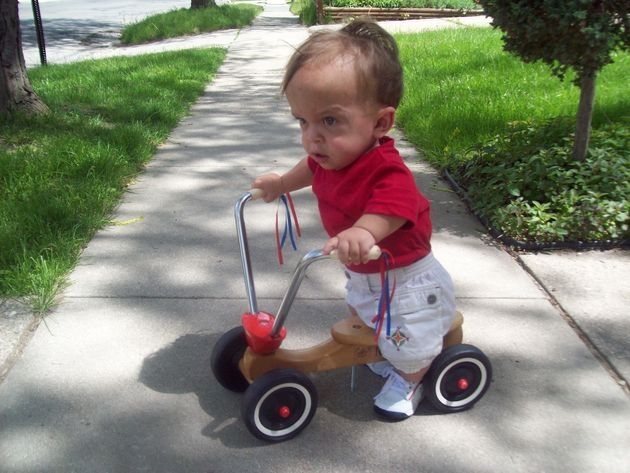Dwarfism
Dwarfism, commonly termed short stature, is a sensitive issue faced by the affected individuals. People with this condition may experience several challenges in their daily lives related to their small stature, which may lead to social isolation or withdrawal. Dealing with the prejudices in society can be difficult for them.
What is dwarfism?
Dwarfism is a condition characterized by significantly shorter height than the average. It results either from medical reasons or can be genetically inherited. According to the advocacy group Little People of America (LPA), an adult with 4 feet 10 inches of height or less is considered to be a dwarf.
People with dwarfism can lead a long and fulfilling life. They do not lack intellectual ability. However, the condition may cause some health complications, such as bowels and back problems, and even affect the functioning of the brain and lungs.

What are the types of dwarfism?
Dwarfism is of two types. They are:
- Proportionate dwarfism: In this type of dwarfism, the head, trunk, hands, and legs are proportionate to each other but are smaller than the average-sized person. It occurs due to hormonal imbalance and can be corrected with hormone injections during the child's growth.
- Disproportionate dwarfism: This is the most common type of dwarfism, in which the body parts are not proportionate to one another. For example, some people may have considerably short arms and legs, but their trunk is of normal size.
What are the signs and symptoms of dwarfism?
In addition to short stature, dwarfism is accompanied with the following symptoms based on the type and its cause:
Proportionate dwarfism
- Slower growth rate than normal
- Short legs, arms, and body
- Delayed puberty
Disproportionate dwarfism
- Short arms and legs, but an average sized trunk
- Short fingers with a wide gap between the middle and ring finger
- Large head, prominent forehead, and a flattened nasal bridge
- Bowed legs
- Reduced mobility of the elbows
If disproportionate dwarfism is caused by spondyloepiphyseal dysplasia congenital (a rare genetic condition), then it may cause these signs and symptoms:
- A short neck and trunk
- Shorter arms and legs
- Broad and round chest
- Cleft palate
- Flattened cheekbones
- Hip deformities
- Vision and hearing problems
- Arthritis or any other joint conditions
What are the causes and risk factors of dwarfism?
According to researchers, there are more than 300 conditions that may lead to dwarfism. However, genetic disorders are considered to be the most common cause of dwarfism. Dwarfism usually occurs when there is a genetic change either in the egg or sperm before conception. The exact reason for this genetic change is unknown and unpreventable.
The following are common causes of dwarfism:
- Achondroplasia is a genetic condition in which the affected individual has one mutated gene related to dwarfism while the other gene is unaffected.
- Turner syndrome is a condition that affects only females. In this condition only one X chromosome is inherited, while the second X chromosome is either missing or partly inherited.
- Growth hormone deficiency might be due to genetic mutation.
- Hypothyroidism at young age, in which the thyroid gland is underactive and may lead to poor growth and other problems.
- Intrauterine growth retardation is a condition in which the unborn baby is much smaller than the average.
Other factors, such as malnutrition, growth hormone deficiency, and a family history of dwarfism may also increase its risk.
How is dwarfism diagnosed?
In some cases, the appearance of the child at the time of birth is sufficient to make the diagnosis. Further, the child's height and weight are measured and compared with the average population to confirm dwarfism.
Some types of dwarfism can be diagnosed during pregnancy through genetic testing. However, in most cases, dwarfism is not diagnosed until after childbirth. An ultrasound helps in making a tentative diagnosis during the baby's development in the mother's womb. The condition is confirmed by collecting and testing a sample of amniotic fluid from the mother's womb.
Blood tests may be necessary to confirm dwarfism associated with hormonal deficiency.
What are the treatment options?
Regardless of the cause, dwarfism cannot be corrected completely. However, treatment is given to correct and relieve problems caused by its complications. The treatment options for dwarfism may include:
Hormonal therapy
It is recommended for children with growth hormone deficiency. This therapy involves daily injections of synthetic human growth hormone. The child treated with this therapy attains close to the average height of a normal person. This therapy can also be recommended for individuals who are concerned about full adult maturation.
Girls with Turner's syndrome require estrogen therapy and other hormones to reach puberty.
Surgery
Surgical options are recommended in people with disproportionate dwarfism to:
- Correct the direction of the bone growth.
- Stabilize the shape of the spine.
- Relieve the pressure on the spinal cord.
Physical therapy and orthotics
These are non-invasive methods to prevent complications associated with dwarfism. Physical therapy helps to regain strength and range of motion following limb or back surgery. It is also recommended if dwarfism affects the way a person walks or if it causes pain.
Orthotics are customized devices that fit into the shoes to improve the foot's health and function. They help individuals who have problems with balance and other aspects of foot function.
Outlook
Talk to the specialist about your child's condition. Encourage the child to find out about their hobbies and let them get involved in them. Dwarfism may cause several complications. So, it is important for the family members to stay active and support the child's healthy growth and development.